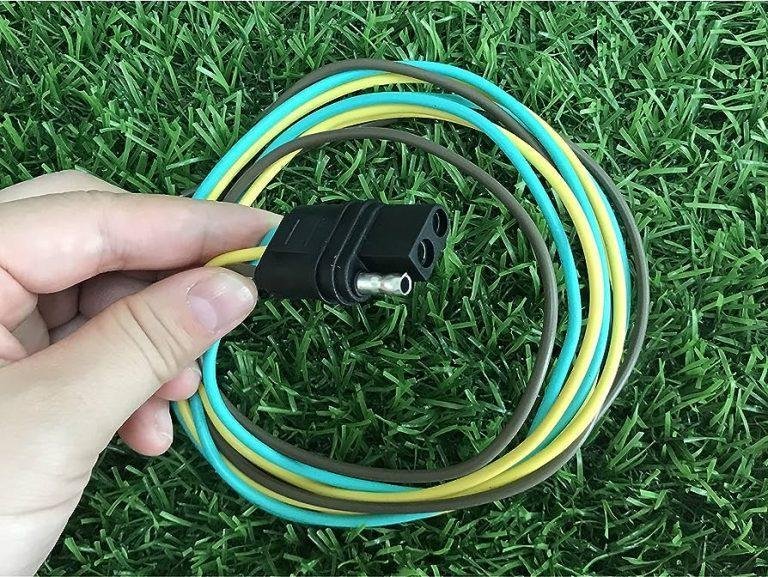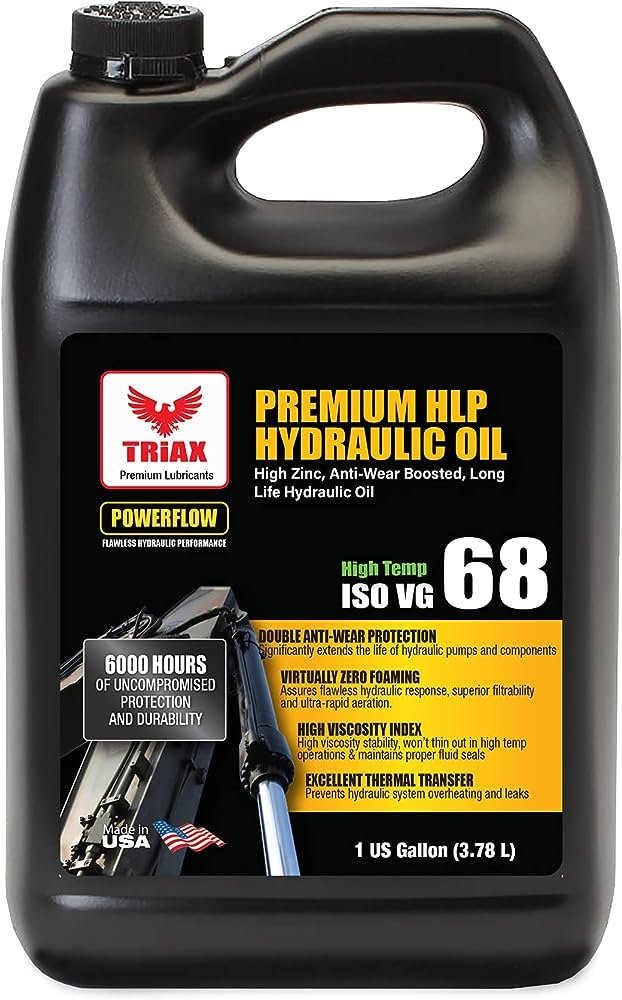Tow haul mode is used to optimize vehicle performance when towing heavy loads. In this mode, the transmission shift patterns and engine performance are adjusted to provide improved control and stability while towing.
Tow haul mode is a feature found in many modern vehicles that provides specific adjustments to the transmission shift patterns and engine performance. This model is designed to optimize the vehicle’s performance when towing heavy loads. When activated, tow haul mode adjusts the transmission shift points to keep the engine operating in a more suitable power range, providing improved control and stability while towing.
Additionally, it may also modify throttle response and other parameters to enhance towing capabilities. Overall, tow haul mode helps enhance safety and efficiency when towing heavy loads by ensuring the vehicle’s drivetrain is better suited to handle the increased weight and demands.
Understanding Tow Haul Mode
Tow haul mode is a vehicle feature designed to optimize performance while towing heavy loads. It adjusts transmission shift patterns, improves braking control, and enhances overall stability, making it easier to navigate challenging towing situations.
What Is Tow Haul Mode?
Tow haul mode is an important feature found in many modern vehicles that enhances their towing performance. When engaged, it adjusts the vehicle’s settings and behavior to optimize towing capabilities. This versatile mode provides a range of benefits to drivers who frequently tow heavy loads, making it an essential tool for a hassle-free towing experience.
Definition And Functionality
In tow haul mode, the vehicle’s transmission and engine management systems work together to deliver enhanced performance tailored specifically for towing purposes. It modifies various aspects of the vehicle’s behavior to provide better control, increased power, and improved braking capability.
Here’s a breakdown of its functionalities:
- Shift strategy: Tow haul mode modifies the vehicle’s shift points, meaning it holds gears longer and shifts at higher revs. This allows for more power to be delivered to the wheels, resulting in better acceleration and control, especially when carrying heavy loads.
- Engine braking: One of the key features of tow haul mode is its ability to activate engine braking. By downshifting earlier and holding gears longer, it increases the resistance against the engine’s compression, effectively slowing down the vehicle without relying solely on the brakes. This reduces the strain on the brake system, preventing overheating and brake fade during prolonged descents.
- Throttle response: When engaged, tow haul mode adjusts the throttle response to provide more immediate power delivery. This ensures that the vehicle can quickly adapt to changes in road conditions, allowing for smoother acceleration and easier maneuverability, even with a heavy load.
- Stability and traction control: Tow haul mode often improves a vehicle’s stability and traction control systems. By optimizing these safety features, it helps manage the added weight and reduces the chances of skidding or sliding during acceleration, braking, or cornering.
How Does Tow Haul Mode Work?
Tow haul mode works by recalibrating different components and settings within the vehicle’s drivetrain. It actively monitors factors such as engine load, speed, and throttle input to adjust its behavior accordingly. Here’s a simplified explanation of the mechanism behind tow haul mode:
- Sensors: The vehicle’s onboard sensors continuously gather data about the current driving conditions, such as load and terrain.
- Transmission control unit (tcu): The tcu, in conjunction with the engine control unit (ecu), receives input from the sensors and determines the appropriate transmission settings based on the gathered data.
- Adjustments: The tcu then modifies various parameters, such as shift points, throttle response, and engine braking, to optimize the vehicle’s performance for towing.
- Execution: Once the adjustments have been made, the tcu instructs the transmission and engine to operate according to the new settings, effectively activating tow haul mode.
By utilizing these adjustments, tow haul mode ensures a more enjoyable and efficient towing experience by maximizing the vehicle’s capabilities while minimizing potential risks associated with towing heavy loads.

Benefits Of Using Tow Haul Mode
Tow haul mode offers numerous benefits for drivers towing heavy loads, enhancing safety and control while minimizing wear and tear on the vehicle. With optimized gear shifting, increased engine braking, and improved stability, it ensures a smooth and efficient towing experience.
Tow haul mode is a feature found in many modern vehicles that enhances their towing capabilities. When engaged, this mode adjusts several vehicle settings to optimize performance while towing heavy loads. In this section, we will explore the various benefits of using tow haul mode, as it provides significant advantages for those who regularly tow trailers or haul heavy loads.
Increased Towing Performance
- Improved power and torque delivery ensure the vehicle can handle the added weight of the load effectively.
- Better acceleration and pulling power assist in overcoming resistance, such as inclines or rough terrains.
- The ability to maintain speed even when towing significant loads provides a smoother driving experience.
Enhancing Engine Power And Torque
- Tow haul mode adjusts the engine’s power delivery, allowing it to produce more torque at lower rpms.
- This increase in engine power provides enhanced pulling capacity, making it easier to haul heavy loads.
- The optimized power output ensures a more controlled and efficient towing experience.
Optimizing Transmission Shift Points
- Tow haul mode modifies the transmission’s shift points and shift logic to better suit the demands of towing.
- It helps the transmission hold gears for longer, enabling the engine to operate in its most effective power range.
- This optimization results in smoother gear shifts and reduces unnecessary shifting when towing, maximizing fuel efficiency.
Improved Vehicle Control
- Tow haul mode adjusts the vehicle’s stability control and traction control systems to accommodate towed loads.
- This enhanced control helps improve stability when traveling at high speeds or navigating winding roads.
- The system actively monitors and adjusts the vehicle’s behavior to ensure optimal handling and safe towing conditions.
Enhanced Braking And Stability
- Tow haul mode changes the vehicle’s braking system to account for the added weight of the towed load.
- It automatically adjusts the brake pressure and response for improved braking performance while towing.
- This feature helps prevent excessive brake wear and improves stability during towing.
Reducing Wear And Tear On The Transmission
- By optimizing transmission shift points, tow haul mode reduces the strain on the transmission components.
- It minimizes excessive shifting, heat buildup, and clutch wear, thereby extending the transmission’s lifespan.
- This feature helps prevent potential transmission damage caused by towing heavy loads.
Using tow haul mode offers several significant benefits that enhance the towing experience. From increased towing performance and optimized shift points to improved vehicle control and enhanced braking, this feature ensures a safer and more efficient tow. By reducing wear and tear on the transmission, drivers can also enjoy increased reliability and a longer lifespan for this crucial component.
So, next time you hit the road with a trailer in tow, engage tow haul mode and experience the difference it makes.
When To Use Tow Haul Mode
Tow haul mode is used when towing heavy loads to optimize your vehicle’s performance. It adjusts shift patterns and engine braking to provide better control and stability on the road.
Tow haul mode is a feature found in many modern vehicles that optimizes the way the transmission operates in heavy towing situations. This mode is designed to enhance performance, improve control, and prevent potential damage to the vehicle while towing heavy loads.
Understanding when to use tow haul mode is crucial for ensuring a safe and efficient towing experience. Here are the key scenarios where activating tow haul mode can greatly benefit you:
Heavy Towing Situations:
- When towing large boats, rvs, or trailers that exceed the weight of the vehicle.
- When carrying heavy cargo that adds significant weight to the vehicle.
- When towing over long distances or for extended periods.
Hauling Heavy Trailer Loads:
- When towing trailers with substantial weight behind the vehicle.
- When towing trailers with a high center of gravity.
Climbing Steep Grades:
- When traveling uphill on steep inclines.
- When towing heavy loads up mountains or hilly terrains.
- When encountering challenging road conditions such as snow-covered or slippery roads during uphill climbs.
Stop-And-Go Traffic:
- When driving in congested areas with frequent stop-and-go traffic.
- When towing heavy loads in city or urban environments with frequent traffic lights and intersections.
Minimizing Gear Hunting:
- When maintaining a consistent speed while towing.
- When preventing unnecessary gear shifts during acceleration or deceleration.
- When reducing wear and tear on the transmission by preventing excessive gear hunting.
Preventing Overheating:
- When towing heavy loads for extended periods of time.
- When driving in hot weather conditions.
- When encountering challenging terrain that can cause the engine and transmission to overheat.
Remember, activating tow haul mode may vary depending on the vehicle make and model. Refer to your vehicle’s owner manual for specific instructions on how to engage this feature. By utilizing tow haul mode in the appropriate situations, you can improve your vehicle’s performance, enhance control, and ensure a safer towing experience.
Factors To Consider Before Engaging Tow Haul Mode
Tow haul mode serves the purpose of enhancing vehicle performance while towing heavy loads. Before engaging this mode, important factors such as weight distribution, road conditions, and speed should be carefully considered.
For efficient and safe towing, it is important to consider certain factors before engaging tow haul mode. These factors include the weight of the load, road conditions, and traffic conditions. Let’s explore each of these factors in detail:
Weight Of The Load
When towing, it is crucial to be aware of the weight of the load you are carrying. This information enables you to assess whether tow haul mode is necessary and can help prevent potential damage to your vehicle. Here are some key points to consider:
- Heavy loads: If you are towing a heavy load, activating tow haul mode can optimize your vehicle’s performance by adjusting transmission shift points and providing more engine braking. This allows for safer and more controlled towing, particularly when going downhill or navigating steep terrains.
- Lighter loads: For lighter loads, tow haul mode may not be necessary as the vehicle can handle the towing without requiring additional assistance. However, it is always recommended to consult your vehicle’s manual to determine the specific weight range for engaging tow haul mode.
Road Conditions
The condition of the road plays a significant role in determining whether tow haul mode should be engaged. Here are a few considerations:
- Uphill climbs: When towing up a steep incline, tow haul mode can provide the necessary power and torque to help the vehicle maintain speed and prevent excessive strain on the engine. This mode adjusts gear ratios to optimize performance in uphill conditions.
- Downhill descents: When towing downhill, tow haul mode helps by automatically downshifting and utilizing engine braking to control speed and reduce the strain on your braking system. This feature is especially useful in preventing brake fade or overheating.
- Uneven or slippery surfaces: If you encounter uneven or slippery road conditions, activating tow haul mode can enhance vehicle stability by adjusting transmission settings. This ensures better traction control and improved handling while towing.
Traffic Conditions
In addition to the weight of the load and road conditions, it is important to consider the traffic conditions before engaging tow haul mode. Let’s explore a few key points:
- Heavy traffic: When towing in congested areas with frequent stops and starts, tow haul mode can help by modifying transmission shift points. This ensures smoother acceleration and deceleration, reducing strain on the vehicle’s components.
- Highways or open roads: On highways or open roads, where you have a consistent flow of traffic, tow haul mode can optimize performance by adjusting transmission settings to enhance fuel efficiency and overall towing capability.
Before engaging tow haul mode, consider the weight of your load, the road conditions you will encounter, and the traffic conditions you expect. These factors will help you determine whether tow haul mode is necessary for a safer, more controlled towing experience.
Remember to consult your vehicle’s manual for specific instructions and always drive responsibly while towing.
Common Misconceptions About Tow Haul Mode
Tow haul mode is often misunderstood. Its purpose is to optimize the transmission for smoother towing and hauling, improving performance for heavy loads.
Tow haul mode is a feature found in many modern vehicles that is designed to optimize the vehicle’s performance and enhance safety while towing heavy loads. Despite its practicality, there are some misconceptions surrounding tow haul mode that need to be clarified.
Let’s debunk these myths and uncover the truth about this handy feature:
Myth: Tow Haul Mode Increases Fuel Consumption
- Tow haul mode: Known to be a fuel guzzler.
- In reality, tow haul mode can actually improve fuel efficiency when towing heavy loads.
- Here’s why:
- Tow haul mode adjusts the shift points of the transmission to maximize power delivery and torque.
- By keeping the engine rpm higher, it ensures the vehicle is operating in its optimal power band.
- This eliminates unnecessary shifts, reducing the strain on the engine and resulting in better fuel economy.
Myth: Tow Haul Mode Is Only For Big Trucks
- Exclusive for large trucks, eliminating benefits for smaller vehicles.
- On the contrary, tow haul mode can be beneficial for a wide range of vehicles.
- Here’s why:
- Tow haul mode improves the vehicle’s ability to manage heavy loads, regardless of its size.
- It helps to maintain better control and stability while towing by adjusting transmission settings.
- This can be particularly useful for smaller trucks, suvs, and even some cars that are equipped with towing capabilities.
Myth: Tow Haul Mode Is Unnecessary For Short Distances
- Limited utility for short trips, potentially rendering it unnecessary.
- However, tow haul mode can prove beneficial even for short-distance towing.
- Here’s why:
- Tow haul mode optimizes the vehicle’s transmission and engine performance, regardless of the distance.
- It ensures smoother acceleration, better brake control, and improved handling, making towing safer and more efficient.
- Regardless of the distance, having the tow haul mode engaged can enhance the overall towing experience.
Tow haul mode offers numerous advantages for towing heavy loads, debunking common misconceptions surrounding its usage. It can improve fuel efficiency, benefit vehicles of various sizes, and enhance the towing experience even for short distances. Understanding the true capabilities of tow haul mode can help drivers make the most of this invaluable feature when faced with the challenge of towing heavy loads.
Tips For Using Tow Haul Mode
Tow haul mode is a feature in vehicles designed to enhance performance when pulling heavy loads. It adjusts the transmission shift points and engine response to provide more power and control, making towing safer and more efficient. These tips will help you use tow haul mode effectively and maximize its benefits.
Engaging And Disengaging Tow Haul Mode Properly
Properly engaging and disengaging tow haul mode is essential for effectively utilizing this feature in your vehicle. Whether you’re towing a heavy load or navigating steep terrain, knowing how to engage and disengage tow haul mode can enhance your driving experience.
Here are some tips to help you use tow haul mode properly:
- Engaging tow haul mode:
- Locate the tow haul mode button on your vehicle’s gear shift or dashboard.
- Press the button to engage tow haul mode.
- Engaging tow haul mode optimizes your vehicle’s performance and adjusts the transmission shift points for towing or hauling heavy loads.
- Look for the tow haul mode indicator light on your dashboard to ensure it’s engaged.
- Disengaging tow haul mode:
- To disengage tow haul mode, press the tow haul mode button again.
- Disengaging tow haul mode allows your vehicle to return to its normal driving mode.
- This is helpful when you’re no longer towing or hauling heavy loads and want to restore the original transmission shift points.
Adjusting Vehicle Speed And Acceleration
When using tow haul mode, it’s important to adjust your vehicle’s speed and acceleration accordingly. Here are some tips to help you maintain control and optimize your driving experience:
- Adjusting speed:
- Tow haul mode adjusts the transmission shift points to accommodate towing or hauling, which can affect your vehicle’s speed.
- Be aware of the increased load and adjust your speed accordingly.
- Avoid accelerating too quickly or driving at excessive speeds, as it can strain your vehicle and decrease fuel efficiency.
- Stay within the recommended speed limits and drive at a steady pace to ensure safe and efficient towing or hauling.
- Adjusting acceleration:
- To optimize your vehicle’s performance while towing or hauling, practice gradual acceleration.
- Avoid sudden or aggressive throttle inputs, as it can put unnecessary stress on your vehicle’s transmission and engine.
- Instead, smoothly and gradually increase your acceleration to help maintain control and prevent jerky movements.
- By adjusting your acceleration, you can ensure a smoother driving experience when using tow haul mode.
Maintenance And Care For Tow Haul Mode
Proper maintenance and care for tow haul mode will help ensure its effectiveness and longevity. Here are some maintenance tips to keep in mind:
- Regular maintenance:
- Follow your vehicle manufacturer’s recommended maintenance schedule.
- Regularly check your transmission fluid levels and ensure they are at the appropriate level.
- Consult your vehicle’s owner’s manual for any specific maintenance requirements for tow haul mode.
- Driving conditions:
- Be mindful of the driving conditions when you engage tow haul mode.
- Avoid using tow haul mode unnecessarily, as it can increase wear and tear on your vehicle’s transmission and engine.
- Only engage tow haul mode when towing or hauling heavy loads or when driving on steep inclines or declines.
- Consultation:
- If you have any questions or concerns about using tow haul mode, consult your vehicle’s manufacturer or a certified technician.
- They can provide you with specific guidance and recommendations based on your vehicle’s make and model.
By following these tips for using tow haul mode, you can optimize your vehicle’s performance while towing or hauling heavy loads. Remember to engage and disengage tow haul mode properly, adjust your speed and acceleration accordingly, and maintain proper care to ensure its effectiveness.
Frequently Asked Questions On What Is The Purpose Of Tow Haul Mode?
When Should I Use Tow Haul Mode?
Tow haul mode should be used when towing heavy loads or going downhill. It helps improve vehicle control and performance by adjusting transmission shift points. This mode reduces gear shifting to maintain engine power and prevent overheating. By activating tow haul mode, you can avoid unnecessary strain on your vehicle while towing and ensure a smooth driving experience.
Should I Use Tow Haul Mode On The Highway?
Yes, you should use tow haul mode on the highway. Tow haul mode, found in many vehicles with towing capabilities, helps optimize performance when pulling heavy loads. It adjusts the transmission shift points, throttle response, and other settings to provide better control and stability while towing.
By activating tow haul mode on the highway, you ensure smoother gear shifts and prevent the transmission from constantly hunting for the right gear. This reduces unnecessary wear and tear on the transmission and improves fuel efficiency. Additionally, tow haul mode helps you maintain better control of the vehicle and improves braking capabilities, especially when going downhill.
Using tow haul mode on the highway is particularly important if you are towing a heavy load or traveling on hilly terrain. It helps optimize your vehicle’s performance, enhances safety, and prolongs the lifespan of your transmission. So, be sure to engage tow haul mode whenever you are towing on the highway to enjoy a smoother and safer towing experience.
What Happens When You Put A Truck In Tow Haul Mode?
When you put a truck in tow haul mode, it alters the vehicle’s transmission settings to optimize towing performance. The mode adjusts shift points and applies more engine braking, ensuring better control and stability while towing heavy loads. It also helps reduce wear and tear on the brakes by utilizing the engine’s power to slow the vehicle down.
Additionally, tow haul mode adjusts the throttle response, delivering more power when needed to tackle inclines or strong headwinds. Overall, engaging tow haul mode enhances safety, improves towing capability, and provides a smoother towing experience.
Will Tow Haul Mode Save Gas?
Yes, tow haul mode can save gas by optimizing the performance of your vehicle while towing heavy loads. The mode adjusts the transmission shift points to provide more power when accelerating and better engine braking when decelerating, reducing strain on the engine.
This helps to improve fuel efficiency by using the engine’s power more effectively. The optimized transmission shifts also prevent unnecessary revving, which can help to save fuel. Therefore, using the tow haul mode can result in improved gas mileage while towing.
So, it’s a good idea to engage the tow haul mode when towing heavy trailers or loads to minimize fuel consumption and maximize efficiency.
Conclusion
Tow haul mode serves a vital purpose when it comes to towing heavy loads with vehicles equipped with this feature. It optimizes the transmission and engine performance to enhance safety and prevent damage to your vehicle and the load being towed.
By adjusting shift points and increasing torque, tow haul mode helps maintain better control and stability while towing uphill, downhill, or on slippery terrain. Whether you are pulling a trailer, hauling equipment, or transporting goods, activating tow haul mode can significantly improve your towing experience.
It allows for smoother acceleration, increased responsiveness, and reduced wear and tear on your vehicle’s components. Additionally, it assists with maintaining a steady speed and reduces the risk of overheating. Understanding the purpose and benefits of tow haul mode can make a significant difference in ensuring a successful and safer towing experience.
So, the next time you find yourself needing to tow a heavy load, don’t forget to engage the tow haul mode to unlock its full potential and enjoy a smoother, more controlled ride.






